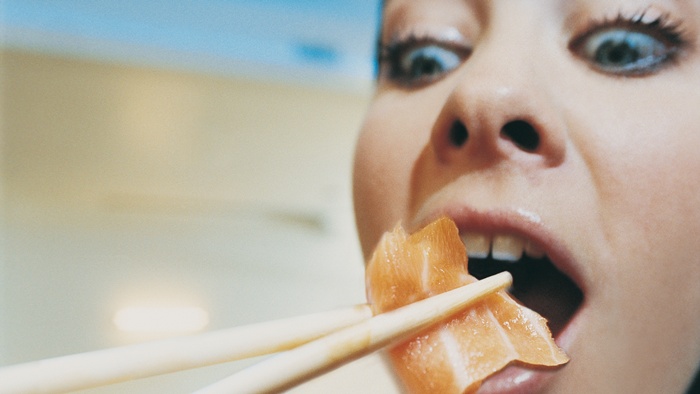
Albacore tuna, wild salmon, sardines, whichever your pleasure, there is no doubt that fish remains one of the best protein foods that you could possibly want to eat with any degree of frequency.
Fish is a great source of complete protein but also contains an abundant supply of nutrients like fatty acids, vitamins B12, B6, vitamin D, A and minerals like calcium, zinc and selenium.
One of the best types of fish available is Albacore tuna. This fish is very low in fat and extremely high in protein. Although some types of albacore tuna can have higher amounts of heavy metals like mercury, tuna caught in parts of the United States like northern Alaska and in Canada can be better and contain more of the important omega-3 fats. Albacore tuna is available canned and can be added to salads to enrich the protein content. Choose one packed in water, and drain and rinse with fresh water before use.
Best Omega-3 Fats Going
Personally I tend to favor salmon for many reasons. First off, there is nothing more flavorful and colorful than wild, northern Coho salmon caught in Alaska or Canada. This type of salmon has one of the highest concentrations of omega-3 fats found in nature.
Typically salmon can contain an average of over 1200 mg of omega-3 per serving. This is impressive, especially if you want to help prevent heart disease, stroke and diabetes. Eating oily fish three to four times per week will also help you live longer.
Get Your Protein Boost
Sardines are an excellent choice for protein and healthy fats. Although these small fish are high in fat, it’s the right type of fat as they can contain almost 2 grams of omega-3 fats per 3-ounce serving.
The great thing about sardines is that they are a low-cost alternative to other more expensive fish. Herring is also part of this discussion because these two types of fish are similar in taste and nutrient value. Try Swedish or Finnish pickled herring, considered a delicacy and an amazing culinary experience.
Fresh-Caught From the Northern Lakes
Rainbow Trout caught in northern lakes or farmed usually are quite excellent to eat and safe, with low levels of chemical contaminants and heavy metals. They also contain lower levels of omega-3 fats but are still excellent for protein and taste great on the barbecue.
Fish Types to Avoid
Despite the fact that fish are nutritious, there are several types that you may want to avoid.
Bluefin tuna, frequently found in sushi restaurants or in fish departments, can be very high in PCBs (polychlorinated biphenyls or nasty chemicals) and heavy metals. Other sea-caught fish including grouper and orange roughy also can contain high amounts of mercury. Another on my don’t eat list is farm-raised Atlantic salmon; these fish tend to be higher in PCBs and antibiotic residues.
Beyond these, try your fish favorites three to four times a week and enjoy. Tasty, healthy eating!
Related:
Sources:
“Seafood and Nutrition,” Seafood Health Facts website; http://seafoodhealthfacts.org/seafood_nutrition/patients/seafood_nutrition_overview.php, last accessed June 2, 2014.













